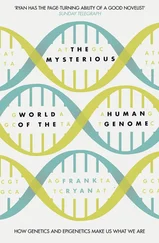Gary Marcus - Kluge - The Haphazard Construction of the Human Mind (Houghton Mifflin; 2008)
Здесь есть возможность читать онлайн «Gary Marcus - Kluge - The Haphazard Construction of the Human Mind (Houghton Mifflin; 2008)» весь текст электронной книги совершенно бесплатно (целиком полную версию без сокращений). В некоторых случаях можно слушать аудио, скачать через торрент в формате fb2 и присутствует краткое содержание. Жанр: Старинная литература, на английском языке. Описание произведения, (предисловие) а так же отзывы посетителей доступны на портале библиотеки ЛибКат.
- Название:Kluge: The Haphazard Construction of the Human Mind (Houghton Mifflin; 2008)
- Автор:
- Жанр:
- Год:неизвестен
- ISBN:нет данных
- Рейтинг книги:3 / 5. Голосов: 1
-
Избранное:Добавить в избранное
- Отзывы:
-
Ваша оценка:
- 60
- 1
- 2
- 3
- 4
- 5
Kluge: The Haphazard Construction of the Human Mind (Houghton Mifflin; 2008): краткое содержание, описание и аннотация
Предлагаем к чтению аннотацию, описание, краткое содержание или предисловие (зависит от того, что написал сам автор книги «Kluge: The Haphazard Construction of the Human Mind (Houghton Mifflin; 2008)»). Если вы не нашли необходимую информацию о книге — напишите в комментариях, мы постараемся отыскать её.
Kluge: The Haphazard Construction of the Human Mind (Houghton Mifflin; 2008) — читать онлайн бесплатно полную книгу (весь текст) целиком
Ниже представлен текст книги, разбитый по страницам. Система сохранения места последней прочитанной страницы, позволяет с удобством читать онлайн бесплатно книгу «Kluge: The Haphazard Construction of the Human Mind (Houghton Mifflin; 2008)», без необходимости каждый раз заново искать на чём Вы остановились. Поставьте закладку, и сможете в любой момент перейти на страницу, на которой закончили чтение.
Интервал:
Закладка:
Anderson, J. R. (1990). The adaptive character of thought. Hillsdale, NJ: Erlbaum Associates.
Ariely, D., Loewenstein, G., 8c Prelec, D. (2006). Tom Sawyer and the construction of value. Journal of Economic Behavior and Organization, 60, 1-10.
Arkes, H. R. (1991). Costs and benefits of judgment errors: Implications for debiasing. Psychological Bulletin, 110(3), 486-98.
Bargh, J. A., Chen, M., 8c Burrows, L. (1996). Automaticity of social behavior: Direct effects of trait construct and stereotype activation on action. Journal of Personality and Social Psychology, 71(2), 230-44.
Bateson, M., Nettle, D., 8c Roberts, G. (2006). Cues of being watched enhance cooperation in a real-world setting. Biology Letters, 2(3), 412-14.
Bechara, A., Tranel, D., 8c Damasio, H. (2000). Characterization of the decision-making deficit of patients with ventromedial prefrontal cortex lesions. Brain, 223(11), 2189-202.
Berscheid, E., Graziano, W., Monson, T., 8c Dermer, M. (1976). Outcome dependency: Attention, attribution, and attraction. Journal of Personality and Social Psychology, 34(5), 978-89.
Blanton, H., 8c Gerrard, M. (1997). Effect of sexual motivation on men's risk perception for sexually transmitted disease: There must be 50 ways to justify a lover. Health Psychology, 16(4), 374-79.
Brickman, R, 8c Campbell, D. T. (1971). Hedonic relativism and planning the good society. In M. Appley (Ed.), Adaptation-level theory (pp. 287-305). New York: Academic Press.
Brickman, P., Coates, D„ 8c Janoff-Bulman, R. (1978). Lottery winners and accident victims: Is happiness relative? Journal of Personality and Social Psychology, 36(8), 917-27.
Brown, J. C, 8c Loglan Institute. (1975). Loglan I: A logical language (3rd ed.). Gainsville, FL: Loglan Institute. Brown, J. D. (1986). Evaluations of self and others: Self-enhancement biases in social judgments. Social Cognition, 4(4), 353-76. Brown, M., 8c Seaton, S. (1984). Christmas truce. New York: Hippocrene Books. Butler, D., Ray, A., 8c Gregory, L. (1995). America's dumbest criminals. Nashville, TN: Rutledge Hill Press.
Chater, N., Tenenbaum, J. B., 8c Yuille, A. (2006). Probabilistic models of cognition: Conceptual foundations. Trends in Cognitive Science, 10(7), 287-91.
Cheever, J. (1990, August 13). Journals. The New Yorker.
Chimpanzee Sequencing and Analysis Consortium. (2005). Initial sequence of the chimpanzee genome and comparison with the human genome. Nature, 437(7055), 69-87.
Chomsky, N. A. (1995). The minimalist program. Cambridge, MA: MIT Press.
Chomsky, N. A. (2000). New horizons in the study of language and mind. Cambridge, UK: Cambridge University Press.
Cialdini, R. B. (1993). Influence: The psychology of persuasion. New York: Morrow.
Clark, A. (1987). The kludge in the machine. Mind and Language, 2, 277-300.
Cushing, S. (1994). Fatal words: Communication clashes and aircraft crashes.
Chicago: University of Chicago Press. Daly, M., 8c Wilson, M. (1988). Homicide. New York: de Gruyter. Darley, J. M., 8c Gross, P. H. (1983). A hypothesis-confirming bias in labeling
effects. Journal of Personality and Social Psychology, 44(1), 20-33. Dawkins, R. (1976). The selfish gene. New York: Oxford University Press. Dawkins, R. (1982). The extended phenotype: The gene as the unit of selection.
Oxford, UK, and San Francisco, CA: W. H. Freeman. Dawkins, R. (1996). Climbing Mount Improbable. New York: Norton. Debiec, J., Doyere, V., Nader, K., 8c Ledoux, J. E. (2006). Directly reactivated,
but not indirectly reactivated, memories undergo reconsolidation in the amygdala. Proceedings of the National Academy of Science USA, 103(9), 3428-33.
Demonet, J. E, Thierry, G., 8c Cardebat, D. (2005). Renewal of the neurophysiology of language: Functional neuroimaging. Physiological Reviews, 85(1), 49-95
Dennett, D. C. (1995). Darwin s dangerous idea: Evolution and the meanings of life. New York: Simon 8c Schuster. Dijksterhuis, A., 8c Nordgren, L. F. (2006). A theory of unconscious thought. Perspectives on Psychological Science, 1(2), 95-109.
Dijksterhuis, A., 8c van Knippenberg, A. (1998). The relation between perception and behavior, or how to win a game of trivial pursuit. Journal of Personality and Social Psychology, 74(4), 865-77.
Dion, K. K. (1972). Physical attractiveness and evaluation of children's transgressions. Journal of Personality and Social Psychology, 24(2), 207-13.
Ditto, P. H., Pizarro, D. A., Epstein, E. B., Jacobson, J. A., 8c MacDonald, T. K. (2006). Visceral influences on risk-taking behavior. Journal of Behavioral Decision Making, 19(2), 99-113.
Dunning, D., Meyerowitz, J. A., 8c Holzberg, A. D. (1989). Ambiguity and self-evaluation: The role of idiosyncratic trait definitions in self-serving assessments of ability. Journal of Personality and Social Psychology, 57(6), 1082-90.
Easterlin, R. A. (1995). Will raising the incomes of all increase the happiness of all? Journal of Economic Behavior and Organization, 27(1), 35-47. Epley, N., 8c Gilovich, T. (2006). The anchoring-and-adjustment heuris
tic: Why the adjustments are insufficient. Psychological Science, 17(4), 311-18.
Epley, N., Keysar, B., Van Boven, L., & Gilovich, T. (2004). Perspective taking as egocentric anchoring and adjustment. Journal of Personality and Social Psychology, 87(3), 327-39.
Epstein, S. (1994). Integration of the cognitive and the psychodynamic unconscious. American Psychologist, 49(8), 709-24.
Epstein, S., Lipson, A., Holstein, C , & Huh, E. (1992). Irrational reactions to negative outcomes: Evidence for two conceptual systems. Journal of Personality and Social Psychology, 62(2), 328-39.
Etcoff, N. L. (1999). Survival of the prettiest: The science of beauty. New York: Doubleday. Fazio, R. H. (1986). How do attitudes guide behavior? In R. M. Sorrentino &
E. T. Higgins (Eds.), Handbook of motivation and cognition: Foundations of social behavior (pp. 1, 204-33). New York: Guilford Press.
Fedde, M. R., Orr, J. A., Shams, H., & Scheid, P. (1989). Cardiopulmonary function in exercising bar-headed geese during normoxia and hypoxia. Respiratory Physiology and Neurobiology, 77(2), 239-52.
Ferreira, E, Bailey, K.G.D., 8c Ferraro, V. (2002). Good-enough representations in language comprehension. Current Directions in Psychological Science, 11(1), 11-15.
Ferreira, M. B., Garcia-Marques, L., Sherman, S. J., 8c Sherman, J. W. (2006). Automatic and controlled components of judgment and decision making. Journal of Personality and Social Psychology, 91(5), 797-813.
Festinger, L., 8c Carlsmith, J. M. (1959). Cognitive consequences of forced compliance. Journal of Abnormal Psychology, 58(2), 203-10.
Finlay, B. L., 8c Darlington, R. B. (1995). Linked regularities in the development and evolution of mammalian brains. Science, 268(5217), 1578-84.
Fishbach, A., Shah, J. Y., & Kruglanski, A. W. (2004). Emotional transfer in
goal systems. Journal of Experimental Social Psychology, 40, 723-38.
Fitch, W. T. (2005). The evolution of music in comparative perspective. An
Читать дальшеИнтервал:
Закладка:
Похожие книги на «Kluge: The Haphazard Construction of the Human Mind (Houghton Mifflin; 2008)»
Представляем Вашему вниманию похожие книги на «Kluge: The Haphazard Construction of the Human Mind (Houghton Mifflin; 2008)» списком для выбора. Мы отобрали схожую по названию и смыслу литературу в надежде предоставить читателям больше вариантов отыскать новые, интересные, ещё непрочитанные произведения.
Обсуждение, отзывы о книге «Kluge: The Haphazard Construction of the Human Mind (Houghton Mifflin; 2008)» и просто собственные мнения читателей. Оставьте ваши комментарии, напишите, что Вы думаете о произведении, его смысле или главных героях. Укажите что конкретно понравилось, а что нет, и почему Вы так считаете.












